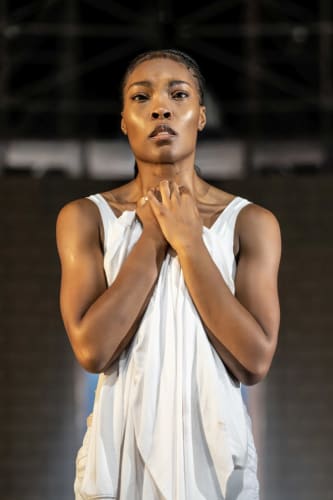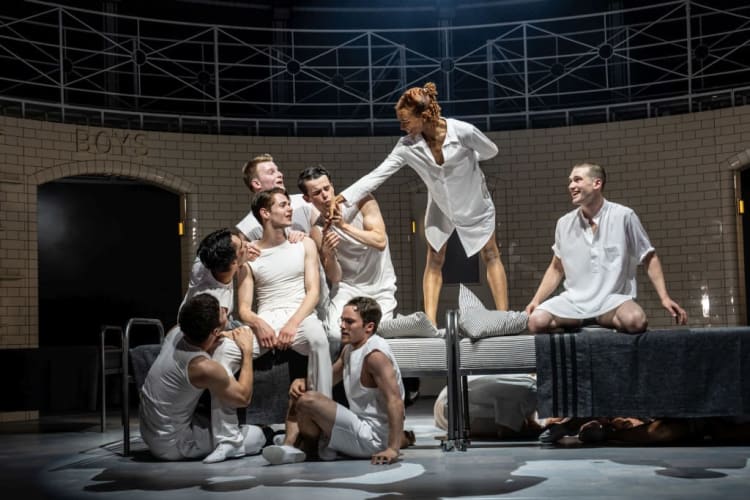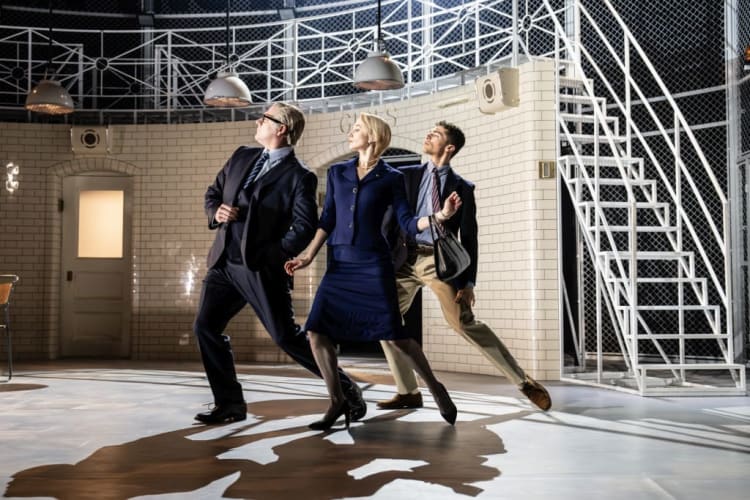It is always a thrill to see Matthew Bourne's re-imaginings of familiar stories and texts. The current production of Romeo and Juliet is set not in Shakespeare's Verona but in what is called 'The Verona Institute'. The set immediately gives the audience something to decode. What is this place? "Is it a borstal? a school? a prison? a hospital? Or a place where some kind of brutal social experiment is taking place?" (programme interview with Bourne).
Like many previous re-interpreters of the play, Bourne has opted for a concept and a context which is recognisable and significant today.
The action starts with a street fight between two rival gangs made exciting by the energy of the company's performance and the rhythmic drive of Prokofiev's music. So far so familiar, but the scene soon changes to the sterile and repressive Verona Institute, where young people are martialled in movement that suppresses individuality and demands obedience. Romeo's parents, the Montagues, who also double as a nurse and an enforcer, have placed him there.
A completely different side of the young people is seen at the Capulets' party, where their increasing sexual awareness and natural exuberance is irrepressible. And it is here that Romeo and Juliet meet and fall in love before a sequence of tragic actions leads to their enforced return to the hated Institute.
Romeo, performed by Paris Fitzpatrick, and Monique Jonas as Juliet respond sensitively to Bourne's choreography, which includes the longest stage kiss in theatrical memory as well as more complex and emotional performance demands in the later tragic scenes.
The company as a whole is outstanding in the vigorous fight and dance sequences, and it is fascinating to watch the detailed choreography and mechanical movement of the Institute scenes.
Individual performances are notable: Danny Rubens as a violent, threatening, dominating Tybalt; the whole group of Romeo's friends including Ben Brown as a lively and entertaining Mercutio; and Alan Vincent and Cordelia Braithwaite as Senator and Mrs Montague demonstrate how talent and experience is evident even in small roles.
Because Bourne's interpretation of Romeo and Juliet is more intimate than previous classical ballet versions of the play, orchestrator Terry Davies has made a new arrangement of the full score for 15 musicians. In order to achieve orchestral colour, the musicians play two or three different instruments each and are effective in producing musical suitable for quiet, emotive moments as well as for the fight and dance scenes in which the energy of Prokofiev’s original work shines through.
Just as Shakespeare adapted material from sixteenth century sources to create a play relevant to audiences of his day, so Bourne in his dance version selects items recognisable from contemporary life. Too many young people may be experiencing treatment in places as intimidating and frightening as the Verona Institute or regularly involved in gang warfare, while daily news stories tell of young teenagers attacked and sometimes killed by knife-wielding strangers.
While the dance version departs substantially from Shakespeare in the final part of the action, there is the same sense of deep sadness that young lives have been wasted and that family and society have some responsibility in this.


